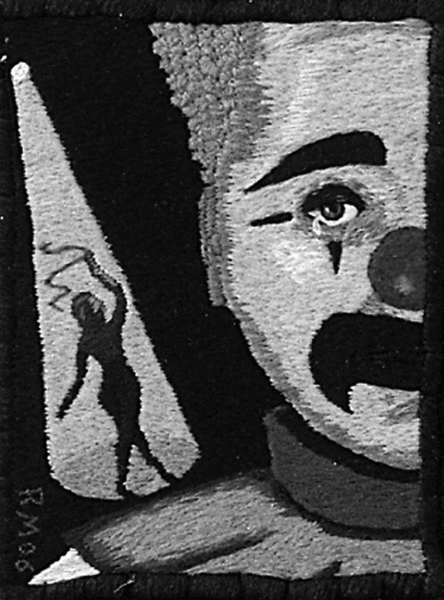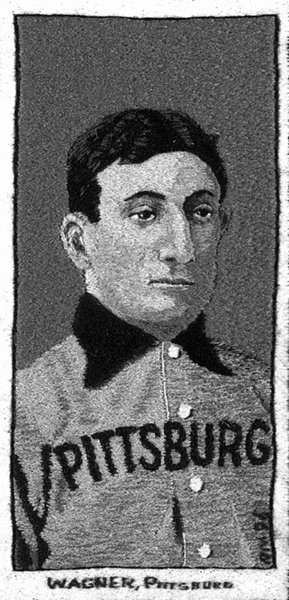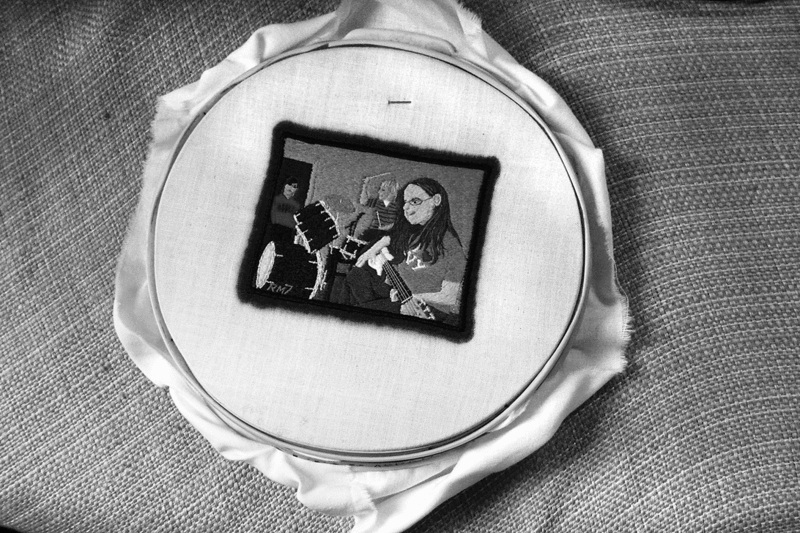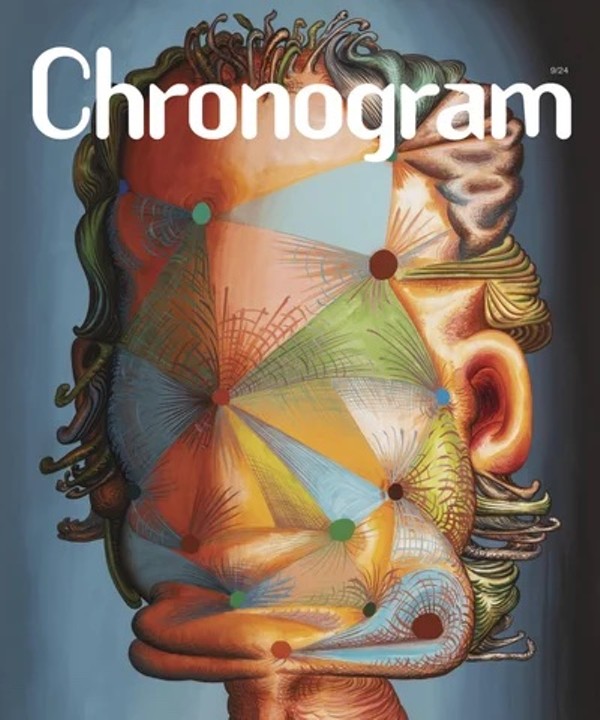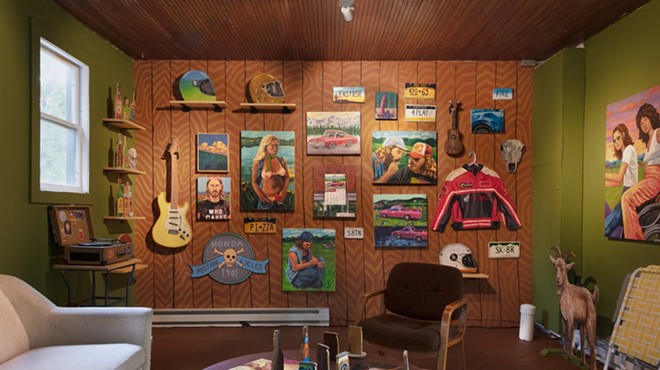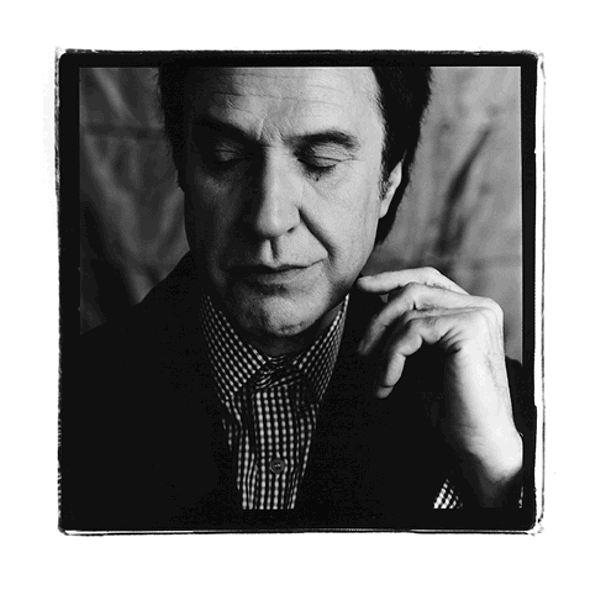The history of embroidery includes complex designs from early Egypt, India, and China, as well as the Bayeux Tapestry, the medieval depiction of the Norman Conquest of 1066. But when Ray Materson took up the art form in the late 1980s, he wasn’t emulating ancient Asians or the historian-seamstresses of the 11th century. He was looking for a way to free his mind from the monotony and horror of prison. A drug addict and alcoholic facing a 15-year sentence for armed robbery (with a toy gun), Materson had surely hit bottom when, in a jolt of inspiration, he made an embroidery hoop from a plastic lid and unraveled the blue and yellow stripes from a tube sock. Without any background in art or needlework, he fashioned the “M” insignia of the University of Michigan and attached it to a baseball hat, to the admiration of his fellow inmates. After an apprenticeship making “commissions” of images like Puerto Rican flags and Harley logos for the other cons, he began to create narrative scenes from imagination and memory. Before long, the work had evolved into an elaborate form of visual memoir.
By the time he was released in 1995, Materson had a national following for his tiny, intricate pictures. He’s exhibited at the prestigious American Visionary Art Museum in Baltimore and the American Folk Art Museum in New York. In the nearly two decades since his first stitch, Materson has depicted episodes of violence, abuse, and degradation, as well as scenes of tranquility, joy, and redemption. His work, small enough to fit in your palm, amazes with its precise handwork (thousands of stitches representing more than 40 hours per image), and its inventive pictorial detail. Materson fits a lot into his miniatures, much of it taking place in the background, which he creates with masterful use of perspective. The work’s jewel-like luster comes from the sheen of the sock thread he still uses as his medium. Black-and-white reproduction cannot do it justice.
Materson lives with his children in a small house in Wynantskill, New York, not far from Troy. The wall decorations alternate between posters from New York City galleries and computer-printed self-help devotions: Expect Success in the kitchen; Where is my attention focused? by the front door. His studio is a plastic tray of threads and needles and “wherever I plant myself,” often the green plaid sofa in his living room. The story of Materson’s metamorphosis from criminal to renowned artist is told in his 2002 autobiography, Sins and Needles. An archive of his work can be found at www.raymaterson.com.
—Timothy Cahill
Ray Materson on his work
His Process
It’s always been about freedom and reaching out, and knowing that I can touch other people in a really special way. The work I create comes from my gut, and comes from my head. I guess I’ve just been blessed with a certain ability. It’s putting these images that I always carry around in my head into something tangible. I get an idea, and do a sketch of it on paper. Sometimes the picture is based on a couple of snapshots that I’ve kind of melded together. I fine-tune it. I generally make each piece 2¼ by 2¾ inches. I put the cloth, which is from white boxer shorts, over the drawing and trace the major elements of the picture. Then, essentially, what I do is paint with thread. I do the images of the people first. I start with the faces, because it’s easy to mess up the faces. Eyes are generally four stitches—two stitches of white, to make the eyeball, the white of the eye, and then just a couple stitches over it to make the iris. There are loads and loads of pictures that I still want to do. One thing I’ve been thinking about recently is creating embroidered wedding portraits. I’d incorporate thread from the bride and groom’s actual clothing—that “something old, something new” idea.
Sock Thread
This is the beauty of sock thread. You can take it and turn it, like this [he demonstrates, rolling a gossamer strand between his thumb and finger, which reveals itself as a braid of even finer threads], and it separates. Then I can take this and mix it with a lighter or darker red, and create shades. That’s one of the advantages of sock thread over standard embroidery floss. You can separate it. I could undo this strand another couple or three times, and I’ve done that. When I do something like the strings on a guitar [he points to a work in progress of his children playing in a rock band]—that was separated a few times.
Living with the Past
My dad painted. He had the soul of a poet. But he grew up in the wrong time, and he just became angry and alcoholic and abusive. And I followed him. I still have a love-hate with my dad, even though he’s been gone 20 years now. What would my life have been if he’d been different? Because I was a good student. I had straight As. And it’s been a long time coming back. After I got out, I was awarded a grant from the Robert Wood Johnson Foundation, a $300,000 grant for my work putting a face on addiction. I started a program at the Berkshire Farm Center in Canaan, New York, an artist-in-residence program for troubled kids. Later, I transferred that to the Ark Charter School in Troy, where I did some workshops for kids, and developed my book as a stage piece. I was able to make my artwork and write. That essentially freed me up so I didn’t have to work an eight-hour day anywhere. But then those funds ran out, and it was like, okay, what are you going to do now?
It was hard for me to find a job, because I have this criminal record. I put in applications with Wal-Mart, Target, Price Chopper.…
Ray, you’re a world-renowned artist, you have a philosophy degree—you’re an accomplished, intelligent guy—and Wal-Mart wouldn’t hire you?!
Yeah, because when you put in that application, there’s that part, “Have you ever been arrested?” You can’t get away from that.
And there’s no place on those applications, is there, to answer the question, “Have you ever exhibited in major museums, or had your work written up in the New York Times or the New Yorker?”
No.
Outsider Art
I don’t like the term. People have danced around, trying to pigeonhole my work. What is it: Is it outsider? Is it folk? My work’s been compared to fine art by people as prestigious as [the Times art critic] Michael Kimmelman. The difference between fine art—contemporary mainstream art—and what’s called outsider, visionary, folk art, a lot of times, is the difference in how much people are going to pay for it. Outsider art, to me, means something that some person can pick up on the cheap and sell and make a buck.
Art and Theater
Theater was a big part of my life, and I still love it. My former theater professor said to me one of the qualities he noticed in my work was that a lot of the images have this “moment from the stage” quality to them. I think part of it comes from my training doing theater when I was in school. We used to do an exercise that was called snapshot, where everybody would be doing some activity and the professor would shout “Snapshot!” and everyone would freeze into a tableau. My work still has that quality. I like stuff that grabs people, and if I can be the force that grabs people, all the better. A friend of mine once asked me, “Why do you like the theater?” and I started going off about, you know, sharing, and the experience with the audience, the dynamics of the stage—you know—and he said, “Bullshit! You like standing up there and saying, ‘Dig me!’” And you know, I guess that is a big part of it. I like positive attention, the applause and people coming up to me. Yeah.







